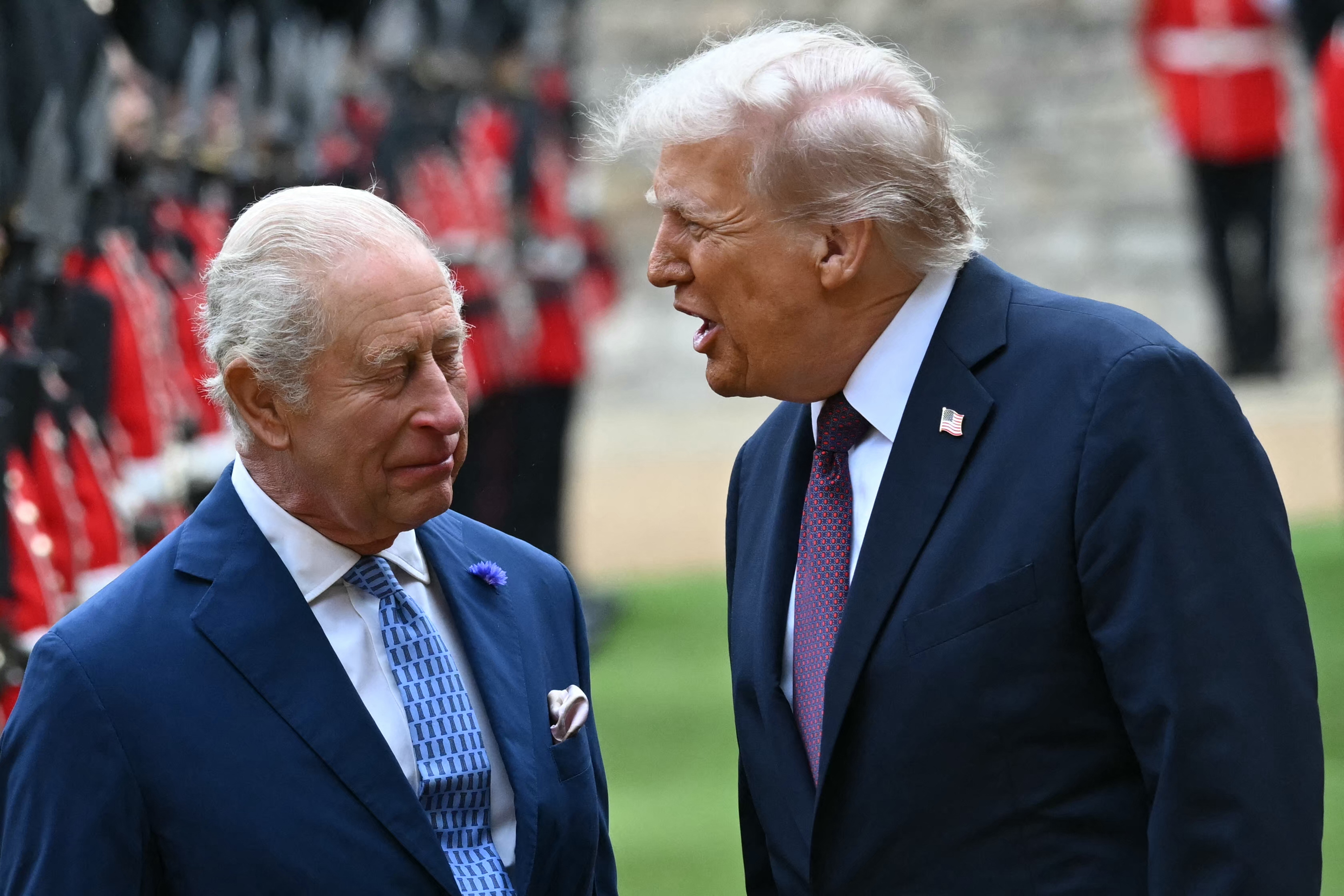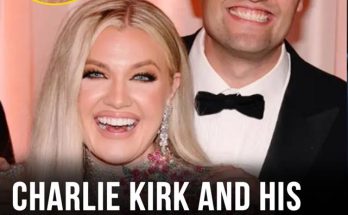When Donald Trump strode into Windsor Castle for what was billed as an unprecedented royal welcome, the former U.S. president seemed determined to make it his stage. Cameras flashed, crowds watched, and the world’s attention fell on the handshake between Trump and King Charles III. What unfolded, however, was not the picture of mutual respect Trump may have hoped for — but rather a masterclass in royal subtlety.
Trump reached for the King’s hand, but instead of offering a simple, diplomatic shake, he went further. With his left hand, he delivered three firm pats to Charles’s arm — a gesture interpreted by etiquette experts as an arrogant attempt at dominance. For the British monarchy, where every movement is choreographed and every gesture carries meaning, this was a serious breach of protocol.
And King Charles did not let it slide.
First Retaliation: No Airport Greeting
Traditionally, when a foreign head of state is welcomed on a royal visit, the monarch’s presence at the airport signals honor and recognition. But when Trump touched down in the U.K., Charles was nowhere in sight. Instead of being received with royal pomp, Trump had to make his way to Windsor Castle by car.
To some, it looked like a minor scheduling detail. But royal watchers know: absence can speak louder than presence. By staying away, King Charles sent an unmistakable signal — this visit would not be on Trump’s terms.
And the contrast was impossible to ignore. Outside Windsor Castle, nearly 200 protesters gathered with signs reading:
“Trump is not welcome.”
Rather than shielding his guest, Charles made no move to silence or disperse them. The message was clear: the King would not bend protocol or public will simply to flatter Trump.
Second Retaliation: The Military Inspection
If Trump’s handshake had raised eyebrows, his next move sparked outrage. During the formal inspection of the royal guard, Trump stepped ahead of King Charles — literally placing himself in front of the monarch on his own ground.
Critics were quick to condemn the move as disrespectful. But Charles, with the patience of a man raised in centuries of protocol, chose a different kind of response. He stepped forward and gently patted Trump on the back — not once, but three times.
It was subtle, yet unmistakable. The monarch was correcting his guest’s blunder, asserting quietly but firmly: On this turf, the crown leads — not you.
Third Retaliation: A Stage of Contrast
For the remainder of the evening, the differences could not have been starker. Trump entered Windsor hoping to dominate the optics — the towering figure flanked by royalty. Instead, the spotlight turned on his breaches of etiquette, amplified by the King’s calculated restraint.
Where Trump projected force, Charles projected dignity. Where Trump tried to overshadow, Charles reminded him of the order.
Observers left the event with one conclusion: far from controlling the narrative, Trump had been made the clown of the evening. His three arm pats at the handshake — meant to display strength — were mirrored by Charles’s three responses, each one stripping away the illusion of dominance.
Why It Matters
For American and British audiences alike, this clash was more than a story about handshakes and back pats. It was about power, respect, and the weight of tradition. Trump has long reveled in his disregard for established norms, often scoring points with supporters by mocking institutions.
But the British monarchy is not easily mocked. Its strength lies in silence, ritual, and the quiet rebukes that carry centuries of symbolism. King Charles, often underestimated, showed that his crown comes with a subtle but potent form of authority.
For many in the older generations — those who remember Queen Elizabeth’s composure through wars, scandals, and political storms — Charles’s calm response felt reassuring. He did not raise his voice. He did not trade insults. Instead, he relied on tradition, subtlety, and the dignity of the monarchy to answer Trump’s arrogance.
A Lesson in Power
Trump wanted to project dominance. Instead, he walked away diminished.
-
No royal greeting at the airport.
-
Protesters left unchecked at Windsor gates.
-
A back-pat correction during the guard inspection.
Each action, small on the surface, built into a larger picture: King Charles was in control.
And for a man like Trump — who thrives on spectacle and demands submission — being quietly outmaneuvered was perhaps the most humiliating outcome of all.
Final Word
History will not remember this Windsor visit for its ceremonies or speeches. It will remember the handshake that went wrong, the arrogance that clashed with etiquette, and the King who answered without raising a finger.
Trump’s three pats may have been meant to assert dominance. But Charles’s three answers reminded the world of an old truth: royal power does not need to shout.
💥 MONICA McNUTT SHOCKER — ESPN STAR WALKS INTO “FIRST TAKE”… AND OUT OF A JOB 🎥💔






